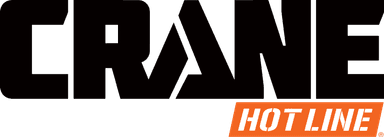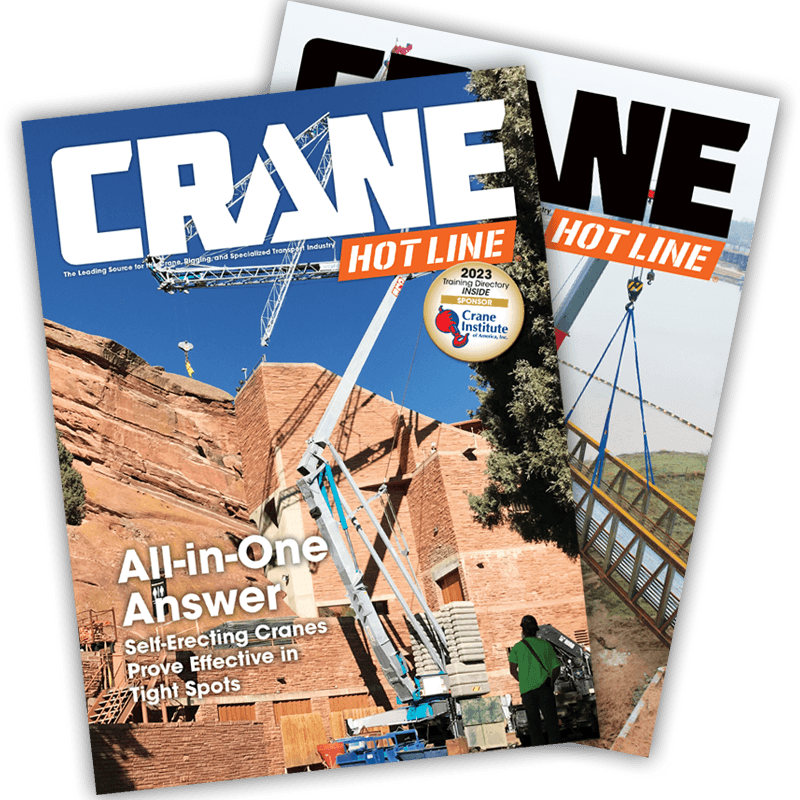Crane Hot Line Editors Summarize Key Crane Trends Revealed at ConExpo
March 30, 2011— As always there was more to see at ConExpo than there was time for in a week. In addition to watching the week-long Crane Rodeo, during which operators competed for top honors, and hosting Maximum Capacity Media’s one-day Crane & Rigging Conference, our editorial team spread out to the corners of the show to bring you these quick takes on trends and interesting tidbits.
Trend No. 1: Chinese cranes for the North American market are a reality. Although Sany, Zoomlion, and XCMG all exhibited in 2008,
this year’s show marked a distinct difference in commitment from the Chinese crane makers.

Enlarge Image
New crawlers from Sany were on display.
Sany
Zoomlion showed RT, crawler, and truck cranes. The rough-terrain cranes are sold through Global Crane Sales, and during the show the distributor also announced an agreement to market Zoomlion’s crawler cranes. Both product lines meet ANSI standards for the
Trend No. 2: Intelligent crane operating systems are branching out beyond the basic load moment indicator system, and crane manufacturers are turning to custom-engineered solutions that make use of telematics. Kobelco’s new K-Cross system, which will launch in the
Tadano’s Hello-Net is a web-based monitoring system offering GPS tracking and remote diagnostics. Meanwhile, Link-Belt designed its own new operating system called Link-Belt Pulse. More than a rated capacity indicator, it also includes boom extend mode control, self-diagnostics, and continuous monitoring of crane functions and conditions.
Likewise, both Kobelco and Tadano introduced fuel management systems. In both cases, the operator can choose whether to employ the system. When turned on, the systems will reduce engine rpm if they determine that the crane is idling or in light-work modes. The result is fuel savings and reduced emissions.
Trend No. 3: Crane manufacturers continue to mount bigger and bigger cranes on commercial carriers. In 2007 Manitex was the first to break the 50-ton barrier in
such a configuration and others have followed. Yet, Terex’s Crossover 6000 is worth mentioning. Rated at 60 tons and offering a 170-foot maximum boom length, the crane combines the T560 upper with a commercial carrier. At the show it was mounted on a Freightliner. An X-pattern outrigger design is central to achieving chassis longevity and a 360° chart. A hydraulically self-removable counterweight system enables multiple configurations and increases the boom truck’s roadability. According to Jay Barth, product marketing manager for Terex Cranes, a roadable configuration is possible with the crane at its 60-ton rating.

Enlarge Image
Terex's Crossover 6000
Freightliner also made a noteworthy introduction targeted specifically at the big boom truck market. Included in their new SD line of severe duty crane bodies is the 108SD for cranes rated up to 30 tons and the 114SD for 30- to 50-ton cranes. Freightliner showcased its larger body with a Manitex model 40124S. Rated at 40 tons, the crane has a five-section 124-foot boom. “The installation of the Manitex crane [on the 114SD] went smoothly,” said Randy Robertson, director of sales and marketing for Manitex. “It is evident that Freightliner listened to the needs of the truck-mounted crane market. I look forward to adding the 114SD to Manitex’s offering of crane chassis.”
Trend No. 4: Remanufacturing is not new but
Manitowoc’s efforts to legitimize the process will reduce the time and costs involved, making it a truly viable option for buyers who want to add years of life to existing models in their fleet. The manufacturer’s new EnCore Partners program qualifies certain dealers, of which H&E Equipment Services is the first, to do OEM-backed structural repairs and complete remanufacturing of any

Enlarge Image
Representatives from H&E, Turner Industries, and Manitowoc Crane Care stand with the remanufactured Manitowoc 888.
Frank Arthur, branch manager of H&E Equipment Services in Belle Chasse,
On display at the show was a 1996


